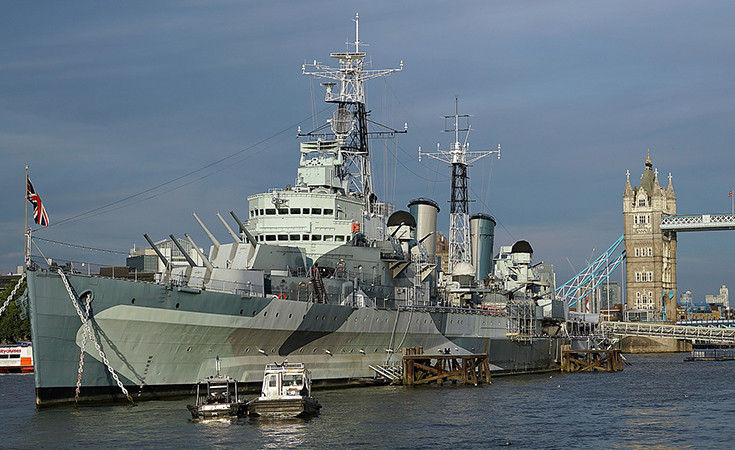
HMS Belfast (C35) is a British cruiser (battle ship) of the Town class (subtype Belfast), one of the nine cruisers of its type in the Royal Navy which played a key part in the Second World War. Its name comes from the city of Belfast, the capital of Northern Ireland. It’s a museum ship (a branch of the Imperial Museum of War). It is permanently anchored on the Thames in London, near the Tower Bridge.
The ship war constructed in 1938 and was a sturdy cruiser which served Great Britain for decades, especially during the Second World War and the Korean War. In the first half of the 20th century, it became a key instrument of colonial politics, serving to protect UK trade routes if they may be attacked by enemy communication, as well as supporting ships of different other classes. Ships of the Town class were especially desirable in the British Empire for its colonial needs. The ship remained in the service of the Royal Navy of Great Britain until 1965, even though it hadn’t been used for war purposes since 1950, and it was finally converted into a floating museum in 1971, six years after its retirement.
The London Agreement for the Limitation and Reduction of Navy Armament, signed in April of 1930 after a conference in the capital of Great Britain, set clear parameters for cruise ships. Cruisers are surface ships, excluding war ships and airplane carriers, whose standard weight exceeds 1850 registered tons, armed with artillery of more than 130mm calibers. Cruisers are divided into two sub-types:
 Ticket price for HMS Belfast
Ticket price for HMS Belfast Working hours of HMS Belfast
Working hours of HMS Belfast